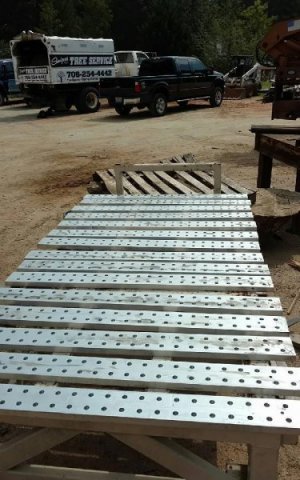So my son wants to build a weight machine. Should be a good project, we'll work together and both learn some skills.
First thing is figuring out how to bore series of 1" holes in a 90" length of square tubing. Six times! Similar to what would have to be done for an adjustable shop press, as well as other items.
The "Machine" will have 6 legs (uprights) that will have different styles of pegs or standoffs that need to be adjustable in height. So the holes have to be very accurate positioned with each leg.
The material is 11 gage 2 x 2 mild steel. Would prefer to not drill/machine clear through. Might need to do front and side on corner legs.
I have a Bridgeport with a dro and of course a stand up drill press. I figure that the BP will be the machine to use, but the length of the tube is going to be an issue. The DRO may not be the best help in this instance because of the number of holes, and the need for 6 pieces to match. I'm thinking some kind of jig to locate a series of holes after the first one is done. Then the lengths could be adjusted to match. Or simply accurately drilled the first hole.
Any thoughts?
As a little kicker to the project, he has mentioned Keyholing the holes if possible. That would compound the project, so not sure on that.


